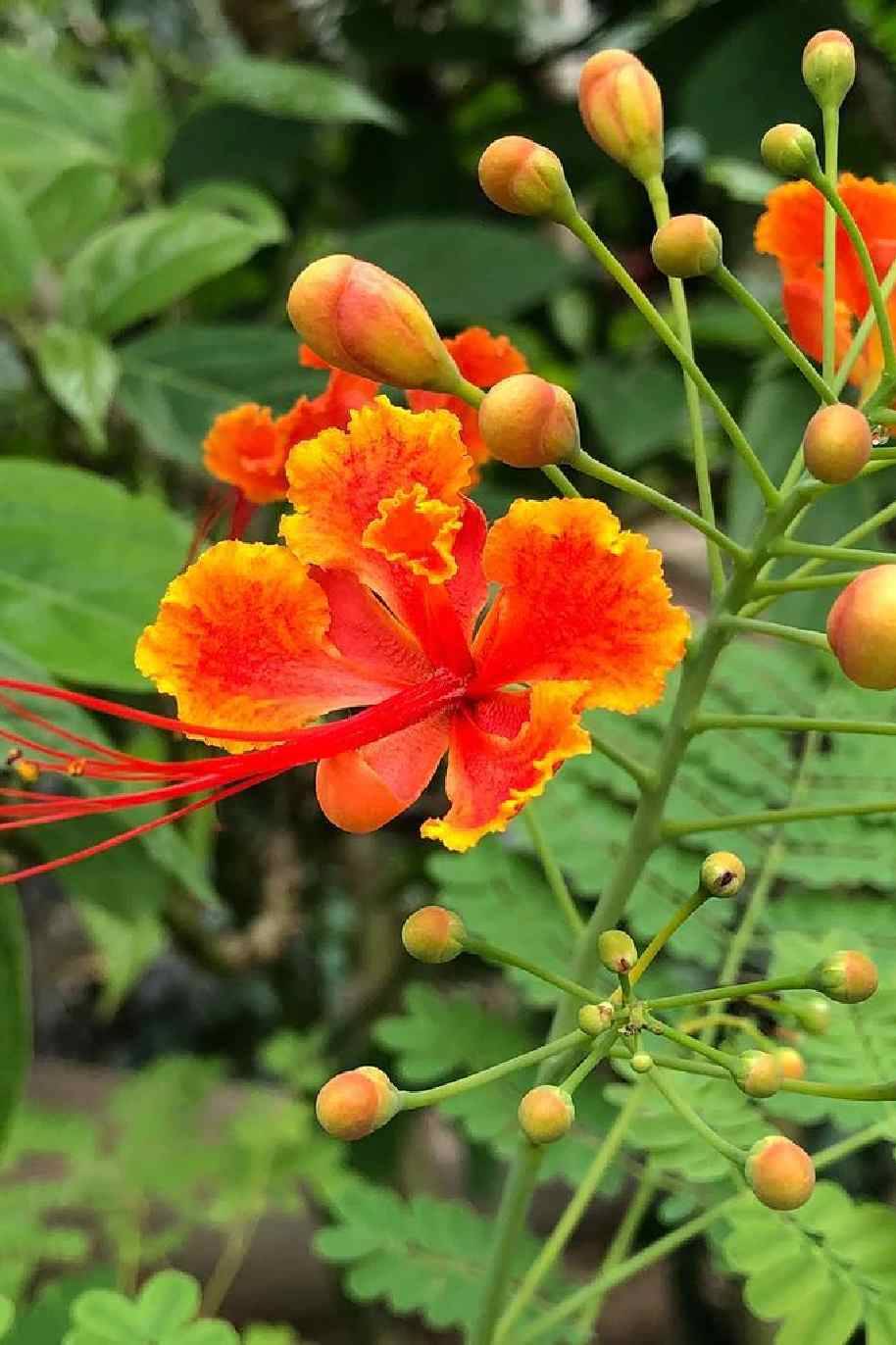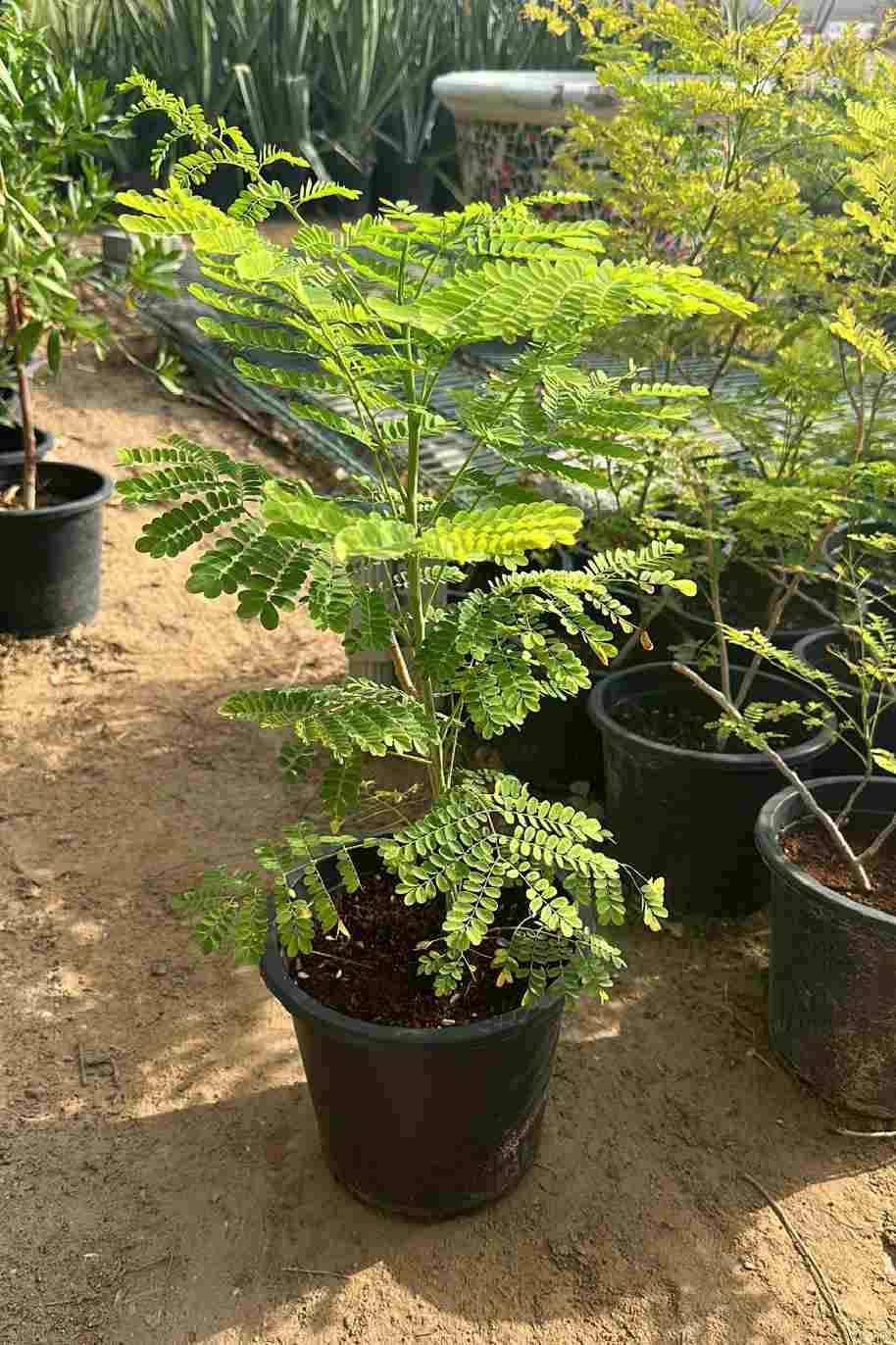Plant Bio
Fast growing shrub with light green fern-like leaves topped with clusters of fragrant orange-yellow flowers. Blooms almost all year. The flowers are attractive to hummingbirds. This shrub is toxic if eaten so take care to prevent children and pets from ingesting it.
Uses
Ideal for planting in mixed borders or as a specimen plant. Perfect for challenging hot locations near pavement or between building foundations and walks. A sturdy plant for slopes.
Watering
Water 2 - 3 times per week until established.
Soil
Light, well-drained soil.
Basic Care Summary
Prune back early each spring to remove dead or damaged branches. Water regularly after first planted. Very drought tolerant once established.
Planting Instructions
Plant in spring or early fall to give plants the best start.
Choose a location that will allow roots to spread and branches to grow freely. Space plants far enough from building foundations, walls, and decks so that the growing foliage won't crowd the structure. Consider whether tall trees or shrubs will block windows or interfere with the roof or power lines.
To prepare the planting area dig a hole as deep as the root ball and three times as wide. After removing the soil, mix it with some compost or peat moss. This enriches the soil and loosens the existing dirt so that new roots can spread easily.
To remove the plant from the container, gently brace the base of the plant, tip it sideways and tap the outside of the pot to loosen. Rotate the container and continue to tap, loosening the soil until the plant pulls smoothly from the pot. The container can also be removed by carefully cutting it down the side.
Set the plant in the hole. If the root ball is wrapped in burlap fabric this must now be removed along with any string or wire securing the burlap. If roots are tightly packed gently rake them apart with your fingers.
Return the soil to the planting area packing it firmly around the root ball. Fill the hole until the soil line is just at the base of the plant, where the roots begin to flare out from the main stem.
Water the plant well then add a 2” (5cm) layer of mulch, such as shredded bark, around the planting area. Keep the mulch at least 4” (10cm) away from the trunk of the plant as this can keep the bark too moist and cause it to decay.
Watering Instructions
Depending on rainfall, new plants need to be watered weekly through the first growing season. A slow, one-hour trickle of water should do the job. During hot spells thoroughly soaking the ground up to 8” (20 cm) every few days is better than watering a little bit daily. Deep watering encourages roots to grow further into the ground resulting in a sturdier plant with more drought tolerance.
To check for soil moisture use your finger or a hand trowel to dig a small hole and examine the soil. If the first 2-4” (5-10cm) of soil is dry, it is time to water.
Monitor new plants through the first two years to make sure they are getting the moisture they need. After that they should be sturdy enough to survive on their own.
Fertilizing Instructions
Established trees should be fertilized every 2-3 years. Feed in early spring when plants start growing.
Fertilizers are available in many forms: granulated, slow-release, liquid feeds, organic or synthetic. Determine which application method is best for the situation and select a product designed for trees and shrubs, or go with a nutritionally balanced, general-purpose formula such as 10-10-10.
Always follow the fertilizer package directions for application rates and scheduling. Over-fertilizing plants or applying at the wrong time during the growing season can result in plant injury.
Pruning Instructions
Pruning may be needed to remove dead branches, encourage bushier growth, promote more flowers, or maintain a specific size or shape.









